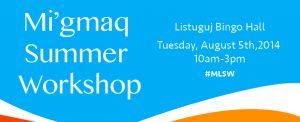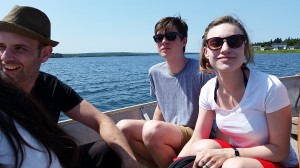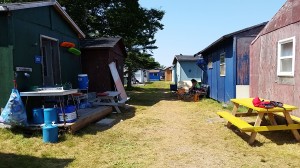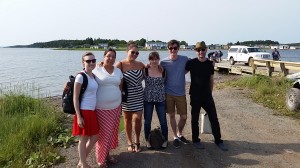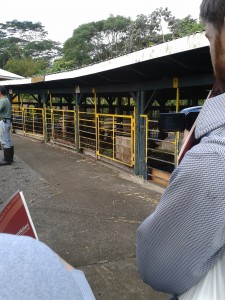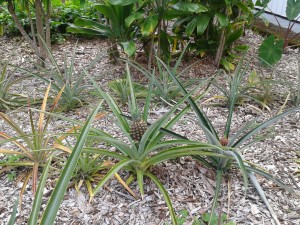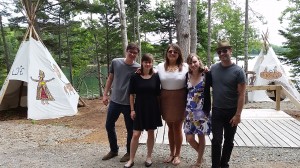
Douglas, Carol Rose, Lola, Yuliya and Alan on Goat Island, Eskasoni, NS.
Our latest venture has brought us (Alan, Carol Rose, Douglas, Lola, and Yuliya) 739 km southeast of Listuguj to Eskasoni, a Mi’gmaq First Nations Reserve in Cape Breton, Nova Scotia. Eskasoni is a model community where the Mi’gmaq language is alive and spoken daily between its community members. Leaving on Sunday, we set out to meet with community members and Mi’gmaq teachers who are helping preserve the language.
The first day we met with our host, Blaire Gould, the Mi’kmaw Kina’matnewey Mi’gmaq Language Coordinator. Blaire Gould works with all programs related to education and the Mi’gmaq language. These tasks include working with Mi’gmaq online dictionary, leading professional development workshops, presenting on the Mi’gmaq language programs around the continent, coordinating Mi’gmaq language programs in and around Eskasoni and between all that she organizes the bienniel L’nuisultinej conference at St. Francis Xavier University.
Retired teachers (a.k.a. The Pioneers of the Immersion Program) Barbara Joe and Fran Young and former Mi’gmaq immersion teacher Mary Propser-Paul joined us over tea to talk about their experiences teaching Mi’gmaq.
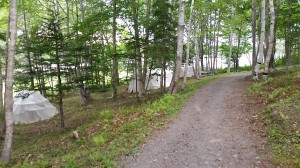
Goat Island pathway
We talked to them about our newest development, learnmigmaq quizlet, which they received with enthusiasm. Grade 1 Mi’gmaq immersion teacher Cindy Poulette, has been using a flashcard game in her classroom. The grade 1 children sit in groups while Cindy holds up a card with a picture on it. Whichever group gueses the correct Mi’gmaq word first receives a point. She liked the audio and image function that quizlet provides. Due to its versatile and accessible nature, quizlet can be used in classrooms via the internet and projected on a screen for such games. When offline, the quizlet app can also be accessed with a smartphone or tablet and any list that had been opened beforehand can be used. The quizlet interface can accommodate a game such as Cindy’s for classes of all ages and all levels.
Meeting at the Elder Centre, we talked with retired and current teachers about the state of the Mi’gmaq language in Eskasoni as well as the programs in effect and under development. Eskasoni has an immersion program up to grade 4. The immersion program is taught at the community school in Eskasoni where all courses are transmitted in the Mi’gmaq language. Grade 4 is the transition year where classes are bilingual English and Mi’gmaq to prepare them for grade 5 where all classes are in English.
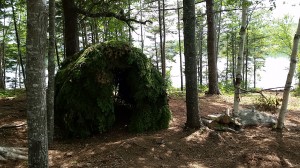
Storage lodge on Goat Island.
In the afternoon we took a tour of Goat Island, a cultural walking experienced located in Eskasoni. We walked around the island which had various mini villages set up along the way, each one having different theme. The themes of the mini villages included basket-making, waltes (a traditional Mi’gmaq game) and replicas of wigwams.

